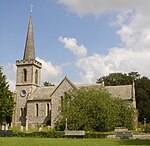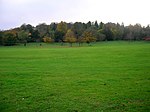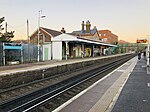Falmer

Falmer is a small village and civil parish in the Lewes District of East Sussex, England, lying between Brighton and Lewes, approximately five miles (8 km) north-east of the former. It is also the site of Brighton & Hove Albion's Falmer Stadium. Falmer village is divided by the A27 road. North of the dual carriageway are a few houses and a pub, with a footbridge linking to the southern part of the village, where a large pond is encircled by cottages and the parish church, dedicated to St. Laurence. The two halves of the village are also linked by a road bridge just outside this circle of houses. The village pond, home to a population of ducks and geese, and is very likely to account for the name of the village. The village is recorded in the Domesday Book as 'Falemere' which is likely to be Saxon for "fallow mere" and mean a dark pool.The campuses of the University of Sussex and the University of Brighton are nearby, as is The Keep—East Sussex County Council's new archive and record office, which opened in 2013.
Excerpt from the Wikipedia article Falmer (License: CC BY-SA 3.0, Authors, Images).Falmer
Ridge Road,
Geographical coordinates (GPS) Address Nearby Places Show on map
Geographical coordinates (GPS)
| Latitude | Longitude |
|---|---|
| N 50.88 ° | E -0.09 ° |
Address
Ridge Road
Ridge Road
BN1 9PN , Falmer
England, United Kingdom
Open on Google Maps







